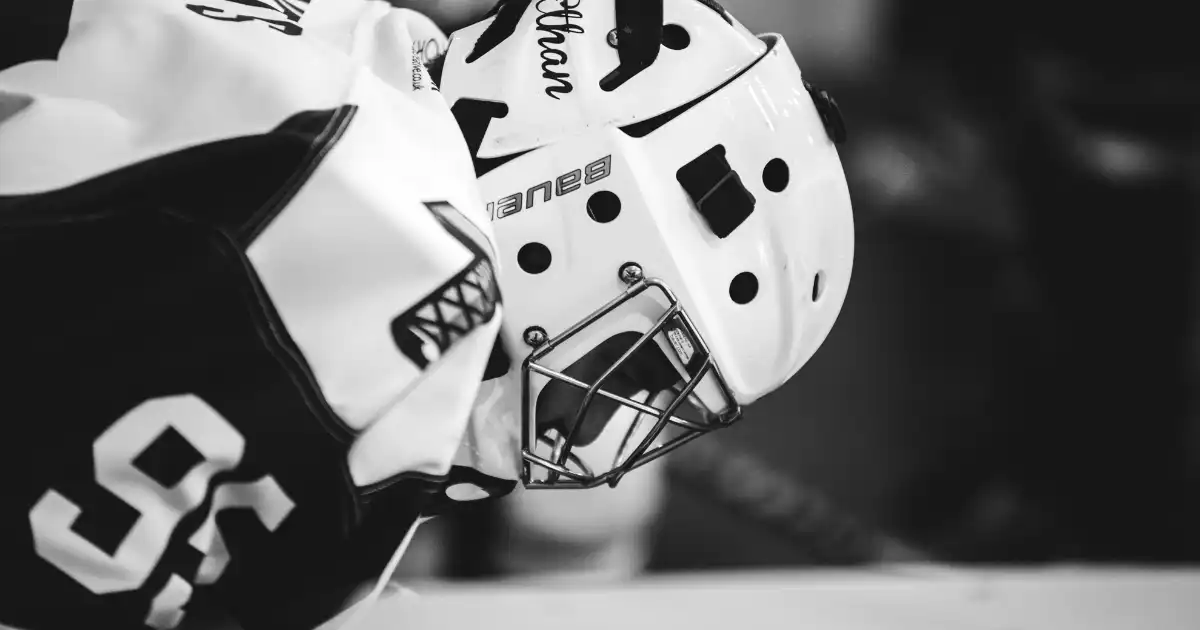Every player faces a slump at some point—whether it’s missing passes, losing battles, or struggling to bury the puck. But a slump isn’t permanent. With a mix of mental toughness, physical training, and a positive mindset, you can reset, regain confidence, and get back to your peak performance. Here are some strategies to help you navigate your way out of a slump and back into the game stronger than ever.
1. Recognize the Slump—And Accept It
The first step to getting out of a slump is acknowledging that it’s happening. Every pro has been through it; it’s just part of the game. Don’t beat yourself up for mistakes or let a bad streak define you. Instead, acknowledge it, take a deep breath, and accept it as a challenge you can overcome.
Tip: Keep a journal of your recent games and practices, noting any trends you notice in your performance. Recognizing patterns helps you understand where adjustments are needed.
2. Go Back to Basics
Sometimes slumps happen when players lose sight of fundamental skills, trying too hard to make complex plays work. Revisiting the basics can ground you and restore confidence in your game.
Focus on:
• Passing and shooting drills: Commit to daily shooting practice to regain precision.
• Stickhandling: Slow things down in practice and work on fundamental puck control.
• Positioning: Revisit game film and focus on your positioning during play.
Breaking your game down into simple, repeatable actions can help rebuild confidence and ensure that when you’re back in form, it’s solid.
3. Set Small Goals
Instead of focusing on ending the slump right away, focus on smaller, achievable goals. Success with small wins—like completing a clean shift, winning a face-off, or getting a quality shot on net—will build your confidence without adding too much pressure.
Example Goals:
• Today, I’m going to win at least 60% of my face-offs.
• I’ll make three clean passes during each shift.
• My goal for this game is to get two shots on net.
Small goals build momentum, and before you know it, you’ll be back to your usual form.
4. Focus on the Process, Not the Outcome
A slump can make players obsessed with results. But sometimes, getting out of a slump means shifting your focus back to the process. Instead of stressing over every stat, concentrate on the work you’re putting in.
Ask yourself:
• Am I moving my feet consistently on each shift?
• How’s my communication with my teammates on the ice?
• Am I aware of my positioning and role during each play?
When you commit to doing the little things right, the results will follow naturally.
5. Keep Your Head in the Game with Visualization
Visualization is a powerful mental tool. Many players use it to reinforce their goals and build confidence.
How to visualize:
1. Find a quiet place where you won’t be interrupted.
2. Picture yourself playing at your best. Imagine yourself skating with speed, controlling the puck, executing plays, and making the perfect shot.
3. Focus on the feelings—confidence, control, and calm.
Research shows that visualization can actually improve physical performance, as your brain rehearses the actions needed for success. So, if you’re in a slump, spend a few minutes each day visualizing yourself out of it.
6. Reset Physically—Take Care of Your Body
Fatigue and physical exhaustion can contribute to slumps. When you’re in one, it’s essential to listen to your body and ensure it’s ready to perform at its peak.
Recovery Tips:
• Prioritize sleep: You need quality sleep to perform, and even one extra hour can make a big difference.
• Fuel up: Revisit your diet and hydration, making sure you’re fueling with balanced nutrients and staying hydrated.
• Stretch and strengthen: Incorporate flexibility and strength exercises, targeting muscles you rely on for skating, shooting, and endurance.
In addition to regular practices, consider spending time in the gym or working on flexibility to feel fresh and powerful on the ice.
7. Lean on Your Support Network
Your team, coaches, and family can be instrumental in helping you push through. Don’t hesitate to lean on teammates who can offer insight or encouragement. A quick conversation with a coach about what you’re working on can help you feel supported and motivated.
8. Celebrate the Wins—Big and Small
When you start to feel improvement, no matter how minor, acknowledge it. Slumps can mess with your confidence, so give yourself credit for every small win as you work your way back.
Keep a positive, encouraging attitude even when the process is slow. Recognizing progress helps rebuild a strong mindset, reinforcing the fact that you’re on the right track.
9. Let Go of Perfectionism
Hockey is a fast-paced, unpredictable game. Trying to play flawlessly can add pressure that contributes to slumps. Accept that mistakes happen—even in your best games—and don’t let the fear of mistakes make you hesitant or overly cautious.
Give yourself permission to play without obsessing over perfection. Trust your instincts, have fun, and keep the love of the game at the forefront.
10. Stay Patient and Persistent
Overcoming a slump takes patience. It’s a process, and while every player wants instant results, persistence is key. Stick with your mental and physical routines, and remember that persistence will pay off.
Remember: every slump ends. Stick to your process, trust yourself, and don’t let temporary setbacks keep you down. With determination, you’ll be back to your best—ready to hit the ice stronger, faster, and more resilient than ever.

